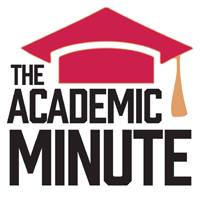Media Watch
Researchers create E. coli-based water monitoring technology
Phys.org -
"This new water monitoring method developed by UCI researchers is highly sensitive, fast and versatile," said co-author Regina Ragan, UCI professor of materials science and engineering. "It can be broadly deployed to monitor toxins at their sources in drinking and irrigation water and in agricultural and industrial runoff. This system can provide an early warning of heavy metal contamination to safeguard human health and ecosystems." Read More
Close to Home: Winter storms, summer swelter can stall electric cars
The Press Democrat -
California boasts nearly half the nation’s approximately 3 million EVs, according to Veloz, a nonprofit that promotes electric vehicles. But achieving the state’s goal of barring new internal combustion engines in a dozen years will require a major expansion of its generating capacity. “If we try to move in this direction and use only battery electric vehicles, we will fail,” Jack Brouwer, an engineering professor at UC Irvine, told CBS Los Angeles. Read More
Beware the Mighty Mantis Shrimp
Texas Monthly -
The ability of the mantis shrimp to inflict punishment without also breaking its own shell fascinated engineers at the University of Southern California and the University of California, Irvine. Mimicking the latticelike structure of mantis shrimp whackers, researchers created a super tough, regenerative material that may eventually be used in construction materials or body armor. Read More
Top 5: How Cold Spray Technology Offers Faster Additive Manufacturing
3Dnatives -
Top 4: A Scientist’s Perspective On 3D Printing for Biological Research. Interviews are a valued method to gain insight into a topic, including manufacturing and science, in an accessible and interesting way – this video certainly shows that! In this clip, we hear from Quinton Smith, [assistant professor of chemical & biomolecular engineering] at University of California, Irvine (UCI) on a number of his research projects, including the use of 3D printing to assemble the tissues needed for organ growth for patients with liver diseases, for example. Bioprinting is of course one of the most exciting applications of 3D printing and has the potential to replace transplants in the future. Read More
So you think you know lift? Better read this
Aerospace America -
Given how deeply air transportation is woven into modern life, it’s surprising that the precise workings of aerodynamic lift remain a topic of debate among the experts. To sort all this out, I met on a video call last month with Paul Bevilaqua, retired from Lockheed Martin Skunk Works, and [associate professor] Haithem Taha of the University of California, Irvine. I learned about several myths and at least one collapsing theory. Here is our discussion, lightly edited and compressed. Read More
Hope grows infusion of sand can arrive early after recent flooding of Pacific Coast Highway at Bolsa Chica beach
The Orange County Register -
Just how much beach has been lost at Bolsa Chica through the years? UCI lead researcher [graduate student] Daniel Kahl analyzed satellite data for The Orange County Register to give a sense of how severe the erosion has been in recently flooded areas. He said the Bolsa Chica beach had been losing 2 feet of width per year, on average, since 1985, but that rate increased to 14.8 feet per year in 2020 and 2021, the latest data available. UC Irvine civil engineering professor Brett Sanders, who studies coastal erosion, said it’s important to not only document beach width, but also beach height or depth. [Subscription required, campus-wide access provided by UCI Libraries. Sign-up here: https://guides.lib.uci.edu/news/ocregister] Read More
Turning trash to electricity in Orange County
Spectrum News 1 -
In 2021, the agency said the landfill in Irvine produced about 154,000 megawatt hours of energy and the landfill in Brea produced about 210,000 megawatt hours, for about a combined total amount of energy to provide electricity to about 50,000 homes. You’ll hear from the executive director of the agency and [Vincent McDonell, adjunct] professor from the University of California, Irvine who is an expert in energy systems about what he thinks about the trash-to-energy system. Read More
Rahim Esfandyar-Pour, University of California, Irvine – A Health Monitoring Wearable Operates Without a Battery
The Academic Minute -
Removing batteries from wearable tech can open it up to more people. Rahim Esfandyar-Pour, assistant professor of electrical engineering and computer science and biomedical engineering at the University of California, Irvine, explores how to do so. Read More
A Health-Monitoring ‘Wearable’ Without a Battery
Inside Higher Ed -
Removing batteries from wearable tech can open it up to more people. In today’s Academic Minute, Rahim Esfandyar-Pour of the University of California, Irvine, explores how to do so. Esfandyar-Pour is an assistant professor of electrical engineering and computer science and biomedical engineering at UC Irvine. A transcript of this podcast can be found here. Read More
The Celebratory Gesture That Is Said to Kill More People Annually Than Sharks
Grunge -
We humans, generally speaking, are rather hardy creatures. We may not have the great bulk of the elephant, the tough skin of the crocodile, or the formidable exoskeleton of the diabolical ironclad beetle, but we're rather resilient as a species. Incidentally, the latter, according to UCI professor David Kisailus (via Phys.org), is "a terrestrial beetle ... a little tank ... It can't fly away, so it just stays put and lets its specially designed armor take the abuse until the predator gives up." That's very tough. We're just relatively tough. This means, unfortunately, that we can die in a wide variety of quite implausible, statistically very unlikely ways. Read More










